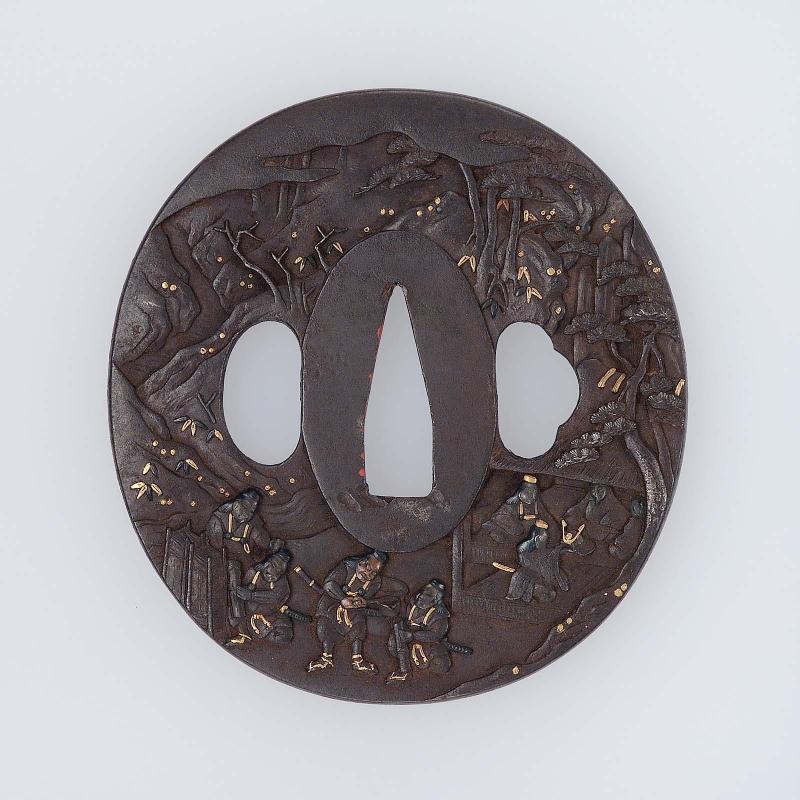Tsuba with design of an episode from the Oeyama story: Raiko receives a magic cap from the Sumiyoshi deity, while his followers rest
Bushû School
(Japanese)
Late 18th–early 19th century
Medium/TechniqueMain material: iron; other metals: gold, shakudo, shibuichi and copper; decorative technique: takabori, zogan
DimensionsOverall: 7.4 x 7 x 0.5 cm (2 15/16 x 2 3/4 x 3/16 in.)
Credit LineWilliam Sturgis Bigelow Collection
Accession number11.12419
On View
Not on viewClassificationsArms and armor
Collections
ProvenanceBy 1911, purchased by William Sturgis Bigelow (b. 1850 - d. 1926), Boston [see note 1]; 1911, gift of Bigelow to the MFA. (Accession Date: August 3, 1911)
NOTES:
[1] Much of Bigelow's collection of Asian art was formed during his residence in Japan between 1882 and 1889, although he also made acquisitions in Europe and the United States. Bigelow deposited many of these objects at the MFA in 1890 before donating them to the Museum's collection at later dates.
NOTES:
[1] Much of Bigelow's collection of Asian art was formed during his residence in Japan between 1882 and 1889, although he also made acquisitions in Europe and the United States. Bigelow deposited many of these objects at the MFA in 1890 before donating them to the Museum's collection at later dates.
Bushû School
Early 19th century (?)
Bushû School
early to mid-19th century













